Abstract
The long-term goal of our research is to improve the overall effectiveness of physicians' time, by improving the information exchange between physicians and chronic-care patients, initially migraine patients. The computer system we are constructing has a partial knowledge base about migraines, common therapies, and common side effects of those therapies. The system consists of two main programs: data collection and explanation. The design of our system is based on empirical data concerning patients' information needs.
Full text
PDF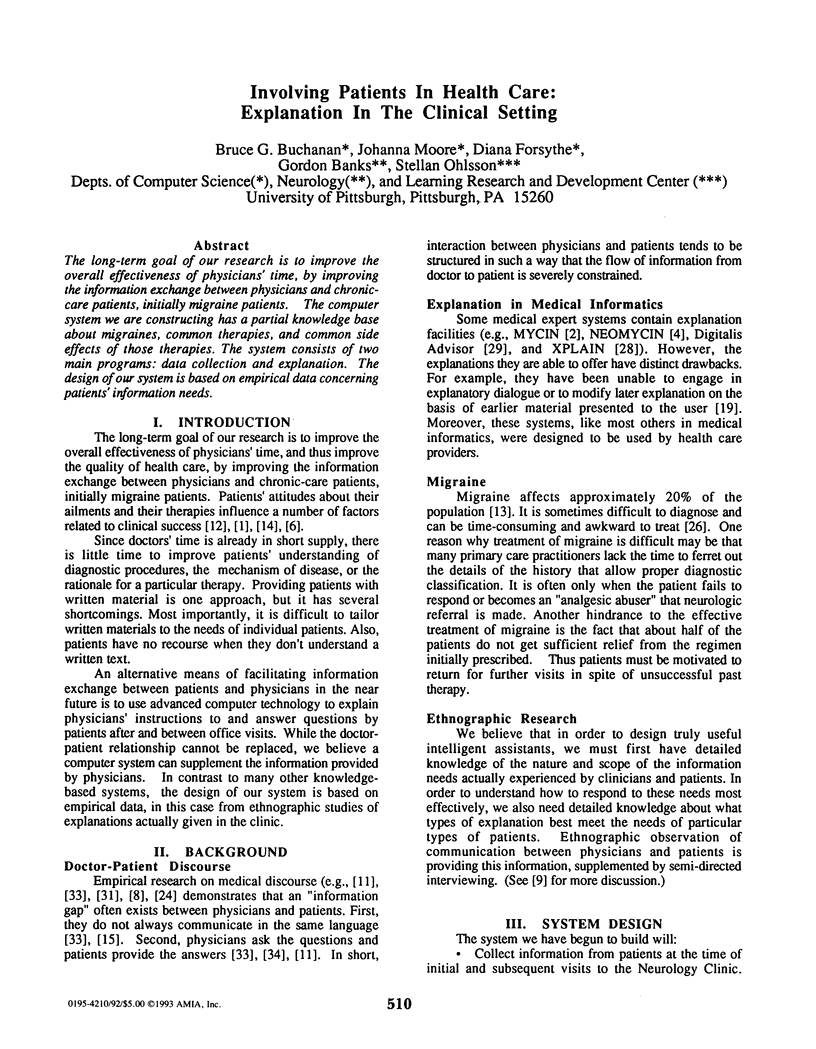
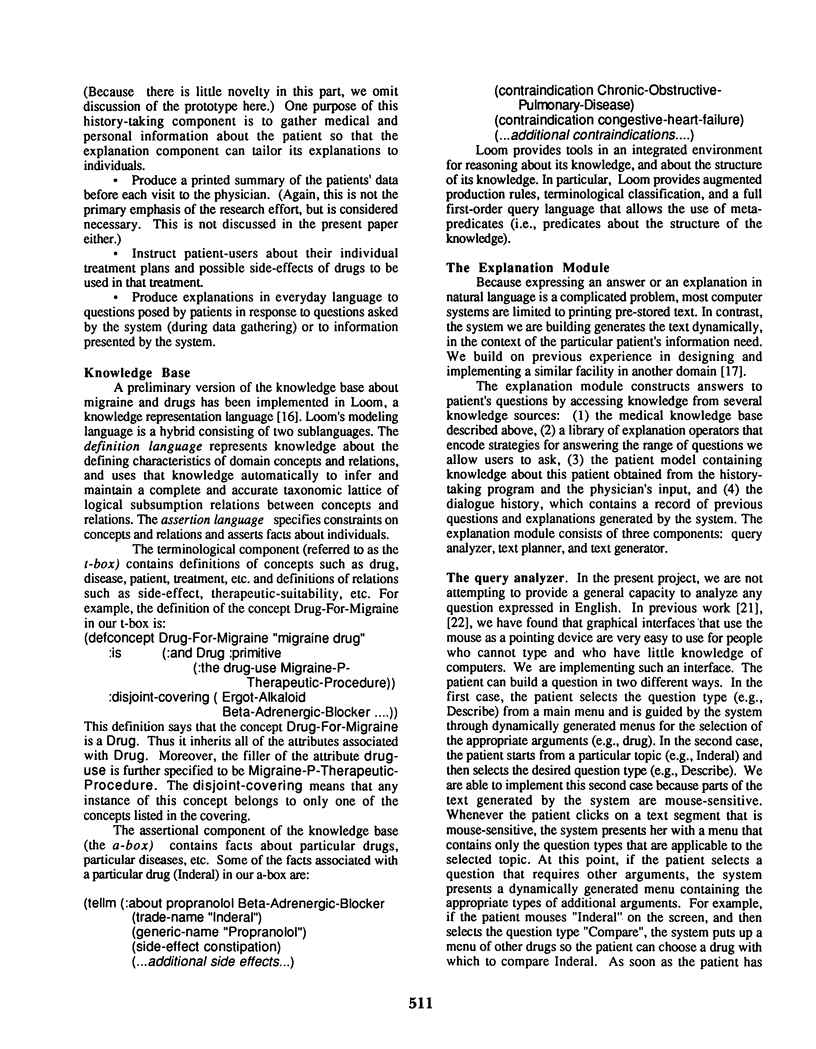
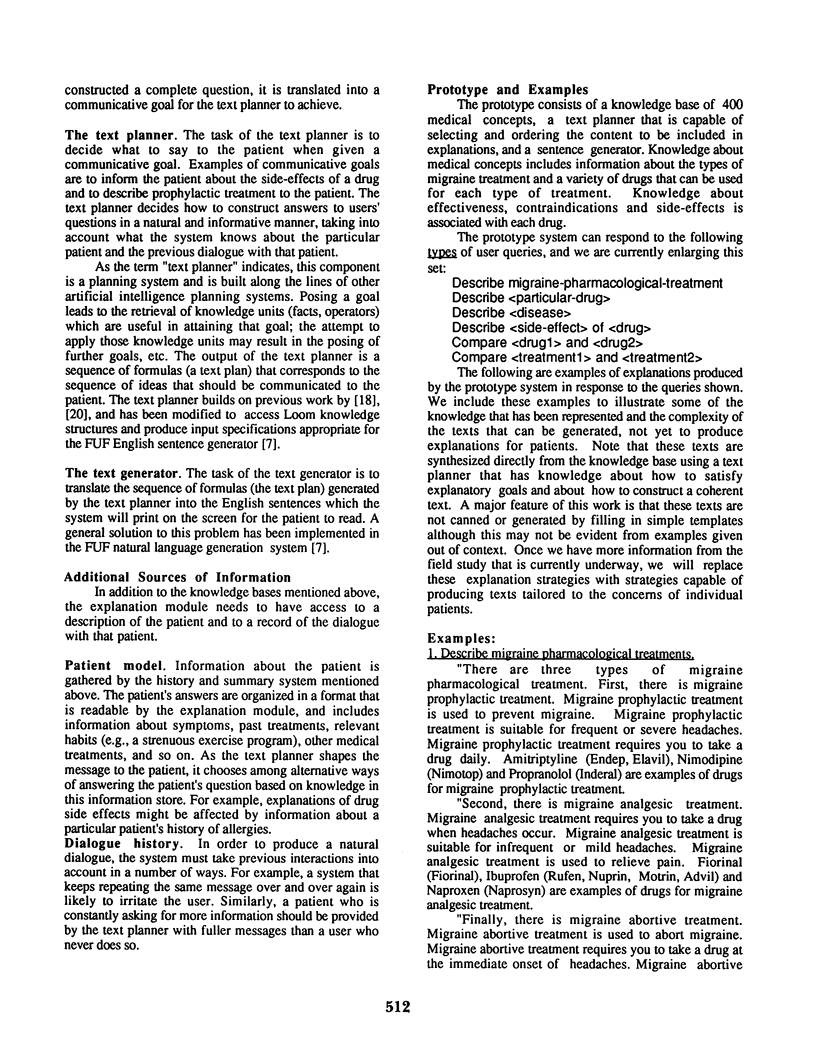
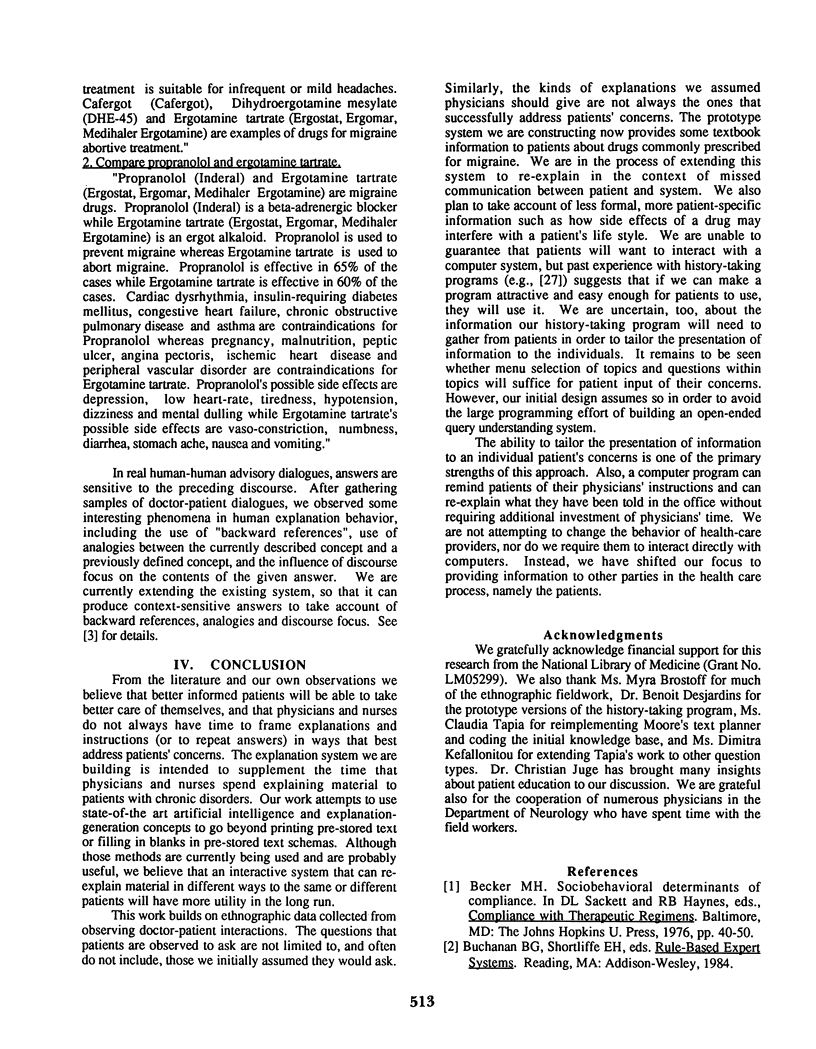
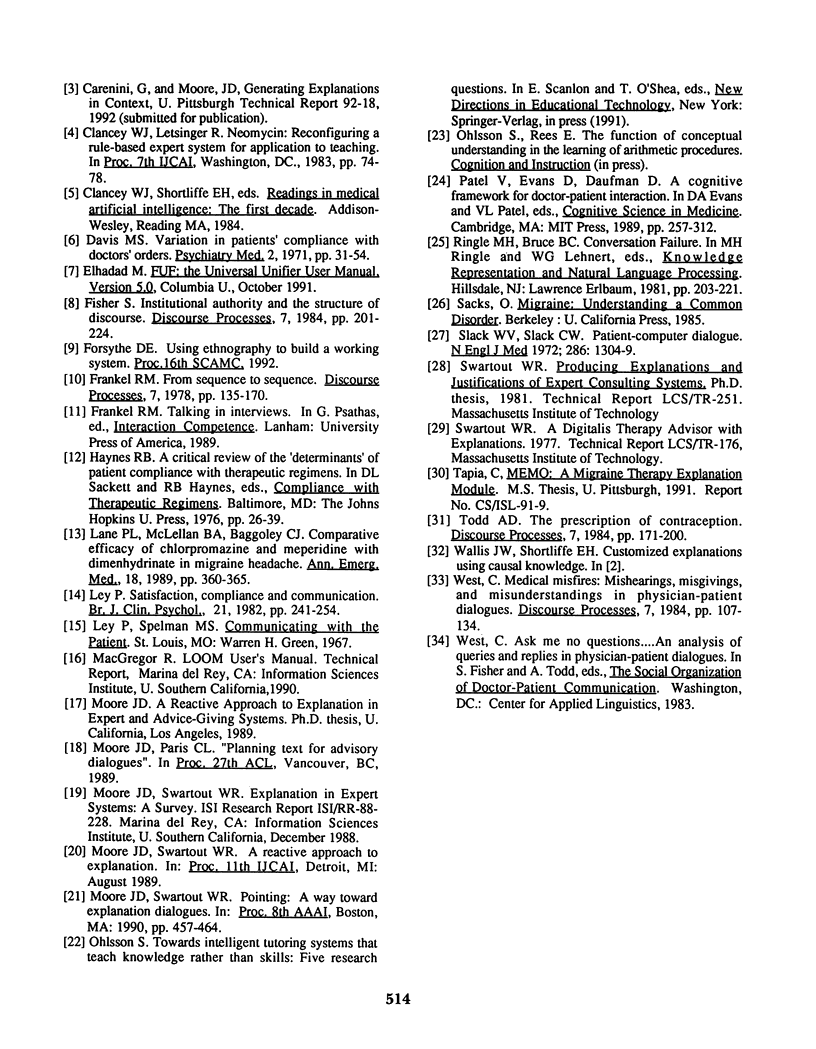
Selected References
These references are in PubMed. This may not be the complete list of references from this article.
- Davis M. S. Variation in patients' compliance with doctors' orders: medical practice and doctor-patient interaction. Psychiatry Med. 1971 Jan;2(1):31–54. doi: 10.2190/kmpk-19ta-gek8-bftm. [DOI] [PubMed] [Google Scholar]
- Lane P. L., McLellan B. A., Baggoley C. J. Comparative efficacy of chlorpromazine and meperidine with dimenhydrinate in migraine headache. Ann Emerg Med. 1989 Apr;18(4):360–365. doi: 10.1016/s0196-0644(89)80570-0. [DOI] [PubMed] [Google Scholar]
- Ley P. Satisfaction, compliance and communication. Br J Clin Psychol. 1982 Nov;21(Pt 4):241–254. doi: 10.1111/j.2044-8260.1982.tb00562.x. [DOI] [PubMed] [Google Scholar]
- Slack W. V., Slack C. W. Patient-computer dialogue. N Engl J Med. 1972 Jun 15;286(24):1304–1309. doi: 10.1056/NEJM197206152862408. [DOI] [PubMed] [Google Scholar]


